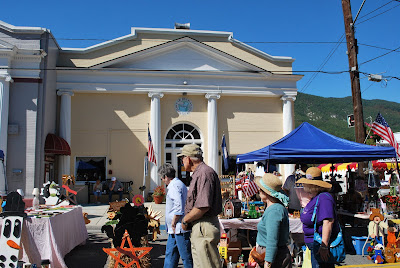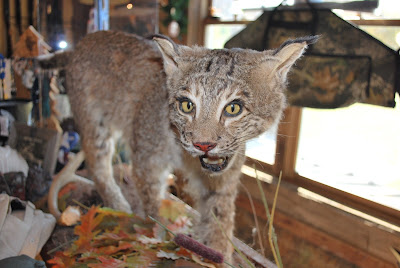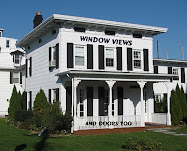 Yesterday we cleaned out the peony bed that had died back a month ago. I trimmed the stalks back to ground level. Adieu my beauties. Take time to check out the link below for more photos from bloggers participating in Today's Flowers
Yesterday we cleaned out the peony bed that had died back a month ago. I trimmed the stalks back to ground level. Adieu my beauties. Take time to check out the link below for more photos from bloggers participating in Today's Flowers
30 November 2008
a lovely peony from my garden
 Yesterday we cleaned out the peony bed that had died back a month ago. I trimmed the stalks back to ground level. Adieu my beauties. Take time to check out the link below for more photos from bloggers participating in Today's Flowers
Yesterday we cleaned out the peony bed that had died back a month ago. I trimmed the stalks back to ground level. Adieu my beauties. Take time to check out the link below for more photos from bloggers participating in Today's Flowers
29 November 2008
REMINDER My Vintage Kitchen Towel Book and Vintage Textile Give-Away Ends Tuesday, December 2nd-Don't Forget to Enter!!!

Just a reminder that my blog give-away ends on Tuesday, December 2nd. If you haven't posted your most humorous holiday story yet, please do. Don't forget to leave me your email address so I can get in touch with you should you be the lucky winner~ I will announce the lucky winners on Wednesday.
24 November 2008
That's My World-Lake Moomaw, Virginia
 Love the views at the Lake
Love the views at the Lake Hooking the pontoon boat back up after a day on the lake
Hooking the pontoon boat back up after a day on the lake Marina Area at Lake Moomaw
Marina Area at Lake MoomawLake Moomaw has been stocked with largemouth bass, smallmouth bass, brown trout, rainbow trout, lake run trout, brook trout, channel catfish, black crappie, yellow perch, chain pickerel, northern pike, gizzard shad, alewife, bluegill and various sunfish.
Gathright Dam and Lke Moomaw provide flood and water quality control along the Jackson and James Rivers in Western Virignia and are located on the Jackson River, 43 miles upstream from its confluence with the Cowpasture River, which, at that point forms the upper James River. The City of Covington is 19 miles downstream from the dam. From the dam, the lake extends 12 miles along the Jackson River. At its normal recreational level of 1,582 feet above sea level, the lake covers a surface area of 2,530 acres and has a shoreline of more than 43 miles.
Gathright Resevoir, as it was originally called, was authorized by Congress in the Flood Control Act of 1946. However, two years later in a similar piece of legislation, Congress stated that the project should be reviewed to determine the desirability of its construction. Lawmakers also questions whether some local funding should be sought based on benefits to be derived from water supply, pollution abatement and other conservation purposes.
In a review report to Congressional Public Works Committees, the Corps recommended that construction be undertaken without requiring local funding support. The project was put in abeyance in 1954, when it appeared that economic justification for Gathright was marginal. In 1957, it was officially "Deferred for Restudy."
The restudy, conducted in 1964, concluded that favorbale economic benefits would prevail by constructing Gathright Dam. Gathright was soon thereafter placed back on "Active" status, and initial construction was underway by 1967. A slowdown in Congressional funding minimized much of the construction work until 1970, when the project went into full gear. In 1978, following the death of Mr. Bejamin Moomaw, the man whose efforts brought the project into the Allegheny Highlands, Congress remanmed the area Gathright Dam, and Lake Moomaw. construction was comleted in 1981.
 View Across the Road From My Friend's Acreage at Lake Moomaw-July 2008
View Across the Road From My Friend's Acreage at Lake Moomaw-July 2008 A Cove at Lake Moomaw-July 2008
A Cove at Lake Moomaw-July 2008 On the way to the main body of the lake, there are several little islands scattered about the lake and you can tie up your boat and have lunch on them or sun when the weather is right
On the way to the main body of the lake, there are several little islands scattered about the lake and you can tie up your boat and have lunch on them or sun when the weather is right Channel leading from boat dock to main body of the lake
Channel leading from boat dock to main body of the lake  November 2008-Boat Dock
November 2008-Boat DockWater is let out from the lake area during the Fall and Winter to keep the river levels up downstream note difference between July photo immediately preceeding this one
 November 2008-Boat Dock
November 2008-Boat Dock The lake is 12 miles in length with a shoreline of 43.5 miles. The average depth is 80 feet and the depth at recreational pool intake tower is 150 feet. The surface area of the lake at normal water level is 2,530 acres. The spillway is 2,680 feet in length with a base width of 100 feet. It is an ugated spillway type.
The lake is 12 miles in length with a shoreline of 43.5 miles. The average depth is 80 feet and the depth at recreational pool intake tower is 150 feet. The surface area of the lake at normal water level is 2,530 acres. The spillway is 2,680 feet in length with a base width of 100 feet. It is an ugated spillway type. July 2008 -Boat Dock
July 2008 -Boat Dock
17 November 2008
That's My World ... from Buchanan, Virginia
 The Old Soda Fountain
The Old Soda Fountain Vintage Theater
Vintage Theater Buchanan City Hall
Buchanan City Hall

From its earliest development, the Town of Buchanan, Virginia was a principal crossing of the James River via the "Great Valley Road" and other regional transportation networks. As an early transportation-oriented community, the Town included taverns and ordinares, stables, blacksmith shops, wagon and carriage makers, general merchandise stores to service travelers, teamsters, and producers of goods being sent to external markets from the region.
Transportation routes and changes in modes of transportation have had primary influence on Buchanan's history. People settled in Buchanan because of the Town's location at a major intersection of transportation routes. Commercial and manufacturing enterprises located there because of the Town's advantageous location for transport of raw materials, goods and products. Changes in means of transportation shaped the Town's periods of growth in commerce and manufacturing.
Following recent annexations, Buchanan's population has grown to over 1,200 inhabitants.
Today, after decades of physical and economic decline, the Town of Buchanan has become a leader within the area for economic development within the context of Historic Preservation. This contemporary practice of development uses historic preservation as a catalyst for growth, promoting quality growth which respects the community's traditional land use development patterns.
16 November 2008
Score a " W" for UCLA
My oh my...my UCLA Bruins beat Washington 27-7 at Husky Stadium in Washington. It was a sweet victory for the Bruins who have had a lack luster season. Not so many years ago the powerhouse Huskies would have had their way with the Bruins, no questions asked.
The Bruins (4-6, 3-4 Pac-10) scored on the first drive of the game and never trailed as Washington fans who showed up on a cool November night to voice their anger and animosity about Neuheisel's messy divorce from the school in 2003 were left to boo their own lame-duck coach Tyrone Willingham in his final home game at Washington.
"I hope that we can talk about the Bruins and the Huskies from now on instead of the messy ending," Neuheisel said. "It will never go completely away because it was a controversial time. It will be exciting for me when it's the stories about the players getting ready to play than what happened back in 2003."
Neuheisel did his best all week to soothe the return. The first-year UCLA coach even apologized to angry Washington fans who blame him for the school's 18-50 mark since his firing in 2003.
But with the two schools occupying the bottom of the Pac-10 standings, the focus was bound to be on the sidelines.
Many fans made certain Neuheisel knew of their displeasure. A large contingent showed up with signs, ranging from "Neu-weasel!" to one asking for betting advice -- "Hey Slick, should I take UW and the points?" -- in reference to Neuheisel's involvement in an NCAA tournament pool that was part of his dismissal at Washington.
But some chose to remember Neuheisel's accomplishments in Seattle with signs acknowledging the 2001 Rose Bowl title, a 33-16 overall record and bowl games in all four seasons.
"I had great years here at the University of Washington. ... My memories are mostly favorable," Neuheisel said. "I understand the messy ending, I acknowledge my part in it and I'm happy that hopefully we can put this behind us."
Bell led UCLA with 97 yards rushing and two touchdowns as the Bruins handed Washington (0-10, 0-7) its 12th consecutive loss and kept the Huskies the only winless team in the country. Washington is 0-10 for the first time ever and its best hope for avoiding the first winless season in school history is next week's Apple Cup against equally woeful Washington State.
"I would say it adds to the urgency," Willingham said of avoiding 0-12. "I think our guys feel it. I feel it."
Neuheisel first stepped on the field about two hours before kickoff, his first time in the stadium since June 2003, and lingered near midfield taking in his old surroundings. The one time Neuheisel's name was mentioned through the stadium's speakers, he was mildly booed. His security detail was more cursory than a show of force with one lone state trooper jogging across the field with Neuheisel when the Bruins emerged from the locker room before kickoff.
After the victory, Neuheisel got his wife, Susan, from the stands and walked off the field satisfied with the return. One of their older sons yelled "scoreboard" to a group of fans around the tunnel on his way out of the stadium.
"In some ways, maybe, hopefully, a little closure," Neuheisel said.
Meanwhile, Willingham walked the Washington sideline for the last time in Husky Stadium, his future already determined to be unemployment following the Huskies season finale Dec. 6 at California.
A familiar name to Neuheisel tried to give Washington momentum early. Trenton Tuiasosopo, cousin of Marques who led Washington to the 2001 Rose Bowl, intercepted Craft to set up Washington's first touchdown and deflected another pass that became Craft's second interception of the first half.
Craft threw his third interception early in the second half, but rebounded by engineering a 15-play, 92-yard drive, hitting on all three of his throws. Bell then flew over the pile from the 1 on the first play of the fourth quarter to put the Bruins up 24-7. Neuheisel gave an emphatic fist pump on the sideline and had a high-five waiting for Craft as he came off the field, while the remnants of a half-filled Husky Stadium -- the announced crowd of 59,738 was tickets sold -- started heading for the exits.
"In some ways it was important to try and play well and get a win but it was more for our team. I tried to make sure our guys understood [that]," Neuheisel said.
Washington's only score -- a 7-yard TD run by Brandon Johnson -- came on a drive in the first quarter that started at the UCLA 11. The Huskies finished with only 135 total yards.
"I never in a million years would have thought we would turn out 0-10," Johnson said.
13 November 2008
My First Blog Giveaway !!!
 With the upcoming holiday season I thought what better time than to have a blog giveaway. I will be giving away a copy of my most recent vintage textile book to two (2) lucky receipients along with a little something extra, a vintage textile treasure.
With the upcoming holiday season I thought what better time than to have a blog giveaway. I will be giving away a copy of my most recent vintage textile book to two (2) lucky receipients along with a little something extra, a vintage textile treasure.What you will get: an autographed copy of my book "Colorful Vintage Kitchen Towels" (2006) and a vintage textile treasure.
Who Can enter: Anyone with a valid email address (United States, Canada, International) and mailing address.
To Enter: All you have to do is leave a comment about your "funniest" holiday experience on my blog. I will do a random number selection and notify the winner(s) by email to get your mailing address.
Closing Date: December 2, 2008 at midnight (EST)
10 November 2008
That's My World Volume IV-Tingler's Mill at Paint Bank, Virginia




The grist mill sits on Potts Creek, on property originally owned by Revolutionary War hero Colonel William Preston. Preston was given the land grants in 1780 for his service in the war. Through Preston's children the property eventually passed to John H. Peyton, Preston's granddaughter's husband, in 1816.
While the unincorporated town was officially formed in 1851, the mill building itself was not built until 1863. Henry Tingler began a small water-powered operation to process corn, wheat and oats for local farmers. During the civil war Tingler was drafted into service by the Confederacy, but managed to return home by proclaiming that his services as a miller were more valuable than his services as a soldier. A Union sympathizer, after his return home he not only supplied food to the people in the area, but also gun powder to the fighting forces.
Humphreys bequeathed the mill to his son, Johnny Henry Humphreys, who operated the mill until 1952, when he sold it to Roy S. and Coral May Morse. Roy Morse sold the mill to David E. and Marcia Harrison a little over a decade later, in 1967. By this time, local residents say, government regulations on the mill had become so strict that operating it was no longer cost-effective.
09 November 2008
08 November 2008
Oregon St. 34, UCLA 6
Jacquizz Rodgers set a Pac-10 rushing record for freshmen and Sean Canfield filled in ably at quarterback to help Oregon State beat UCLA 34-6 on Saturday.
Rodgers ran for 144 yards to increase his season total to 1,089 - the most ever by a freshman in the conference. He's only the third Pac-10 first-year player to eclipse the 1,000-yard mark in a season. Ken Simonton, the Beavers' career rushing leader, had 1,028 in 1998 and Darrin Nelson had 1,069 for Stanford in 1977.
Rodgers, who has now rushed for over 100 yards seven times, scored on a 1-yard TD run with 7:18 left in the third quarter and a 5-yard pass with 10:15 remaining after an interception by safety Greg Laybourne.
The victory helped keep Oregon State's chances at a return trip to the Rose Bowl alive. The Beavers (6-3, 5-1 Pac-10) need to run the table in their final three games against No. 21 California, Arizona and Oregon to win the conference title.
Oregon State's 27-21 upset victory over USC on Sept. 25 would serve as the tiebreaker for the Rose Bowl if it came down to that. The school's last appearance in Pasadena on New Year's Day was at the end of the 1964 season, a 34-7 loss to Michigan.
Canfield completed 16 of 22 passes for 222 yards, including a 75-yard pass play to James Rodgers that set up one of Justin Kahut's two field goals. Last week, the left-handed Canfield led the Beavers to a come-from-behind 27-25 victory over Arizona State, throwing for 218 yards and two touchdowns after starting quarterback Lyle Moevao went down in the second quarter with a strained muscle in his shoulder.
Saturday's win, which snapped a five-game losing streak against UCLA, came a year and five days after Canfield injured his shoulder against USC and lost his starting job to Moevao. Canfield underwent surgery for a torn labrum and missed spring practice, then suffered a setback early in fall practice when shoulder soreness sidelined him for the first few games.
UCLA (3-6, 2-4) was 2-for-15 on third-down conversions after coming up empty on its first nine attempts. Kevin Craft completed 20 of 42 passes for 189 yards and threw two interceptions, one by Patrick Henderson that set up Ryan McCants' 35-yard touchdown run with 2:18 to play.
James Rodgers had six receptions for 115 yards, and Stroughter gained 93 yards on six catches.
UCLA, coming off a bye that followed a 41-20 loss at Cal, was missing offensive guards Micah Reed and Scott Glicksberg along with defensive tackle Jess Ward - all of whom were suspended for the game for violating team rules.
The blue and gold alas are out of bowl contention this season. I can only look forward to next season.
A Day in the Virginia Countryside
The restaurant, called the Swinging Bridge, was our destination for lunch this day and features home grown bison (I will show pictures of them in future posts). Paint Bank’s Hollow Hill Farm is home to about 200 bison and Highlander beef cattle. The meat, which is shipped all over the country is featured prominently on the restaurant's menu. There's buffalo stew, buffalo burgers, and buffalo steak sandwiches. Homemade pies, cakes, breads, and desserts top off the menu.
 Hubby waiting for me while I run about looking at potential photographic opportunities.
Hubby waiting for me while I run about looking at potential photographic opportunities. While waiting to be seated for lunch we ran into friends from my work (Jay and Joan and Alex and Ellen) who were out for the day on their motorcycles. We enjoyed a hearty lunch. A couple of us had bison stew while the others had buffalo steak sandwiches. Dessert was yummy and of course we could not pass it up. Hubby and I shared a piece of pecan pie. Jay and Joan shared a piece of pumpkin log as did Alex and Ellen.
While waiting to be seated for lunch we ran into friends from my work (Jay and Joan and Alex and Ellen) who were out for the day on their motorcycles. We enjoyed a hearty lunch. A couple of us had bison stew while the others had buffalo steak sandwiches. Dessert was yummy and of course we could not pass it up. Hubby and I shared a piece of pecan pie. Jay and Joan shared a piece of pumpkin log as did Alex and Ellen. I ventured up to the swinging bridge after lunch and snapped a photo of hubby, Jay and Alex (right to left) while they chatted about how to solve the world's problems.
I ventured up to the swinging bridge after lunch and snapped a photo of hubby, Jay and Alex (right to left) while they chatted about how to solve the world's problems. Here is the swinging bridge that is above the restaurant dining room. It is firmly anchored and you walk across it to get from one side of the gift shop to the other. You can also walk around but it isn't nearly as fun. The restaurant decor is quite interesting and features a bevy of taxidermy animals. I will share them in a future post.
Here is the swinging bridge that is above the restaurant dining room. It is firmly anchored and you walk across it to get from one side of the gift shop to the other. You can also walk around but it isn't nearly as fun. The restaurant decor is quite interesting and features a bevy of taxidermy animals. I will share them in a future post.06 November 2008
Memories of Summer with Friends-Lake Moomaw, Virginia
 Bill and Cindy's younger daughter Sherry babysitting the watermelon :) She's a cutie.
Bill and Cindy's younger daughter Sherry babysitting the watermelon :) She's a cutie. Hubby tending the grill...sporting his "VIRGINIAN" hat. Hat design from one that Thomas Jefferson wore.
Hubby tending the grill...sporting his "VIRGINIAN" hat. Hat design from one that Thomas Jefferson wore. Bill, Yvonne and my hubby.
Bill, Yvonne and my hubby. Getting ready for a cruise on the lake in Bill's pontoon boat...
Getting ready for a cruise on the lake in Bill's pontoon boat... Life is good for my hubby...a day in the country and tending the meat on the grill, what more could a man ask for~
Life is good for my hubby...a day in the country and tending the meat on the grill, what more could a man ask for~04 November 2008
Let's Remember as We Cast Our Votes Today...
 America lives in the heart of every man everywhere who wishes to find a region where he will be free to work out his destiny as he chooses-Woodrow Wilson
America lives in the heart of every man everywhere who wishes to find a region where he will be free to work out his destiny as he chooses-Woodrow Wilson03 November 2008
That's My World-Issue III View from Cemetary Hill, Fincastle, Virginia
 Check out That's My World where people from all over the globe share pictures of their part of the world.
Check out That's My World where people from all over the globe share pictures of their part of the world.View from the cemetary on the hill in Fincastle, Virginia looking toward West Virginia.






































.jpg)

